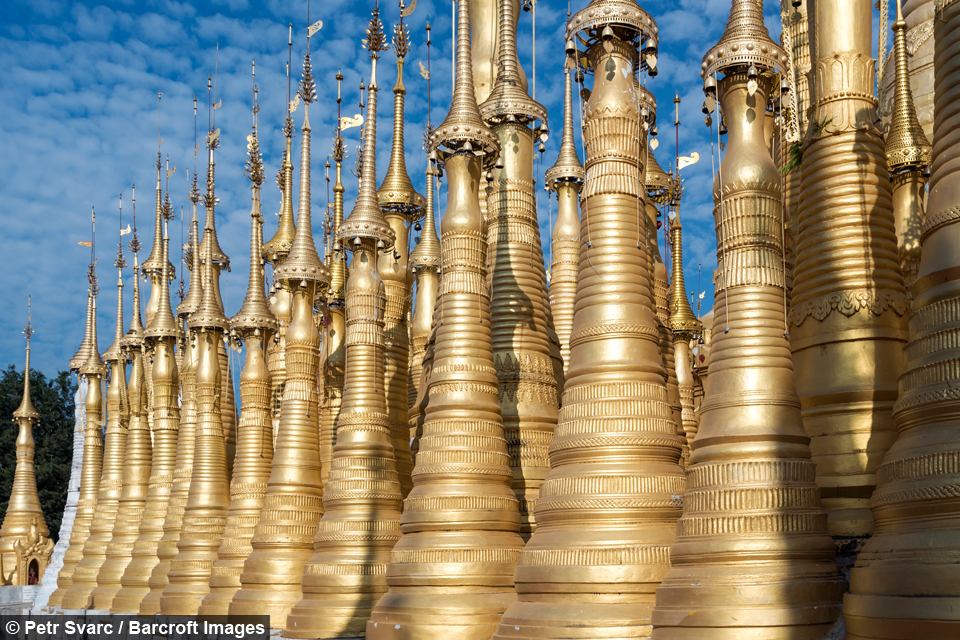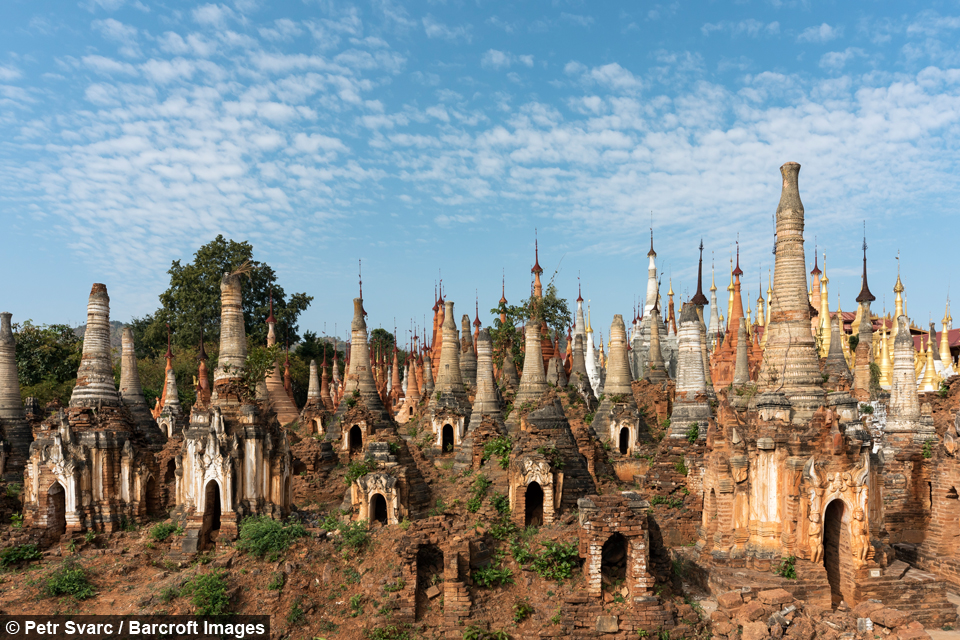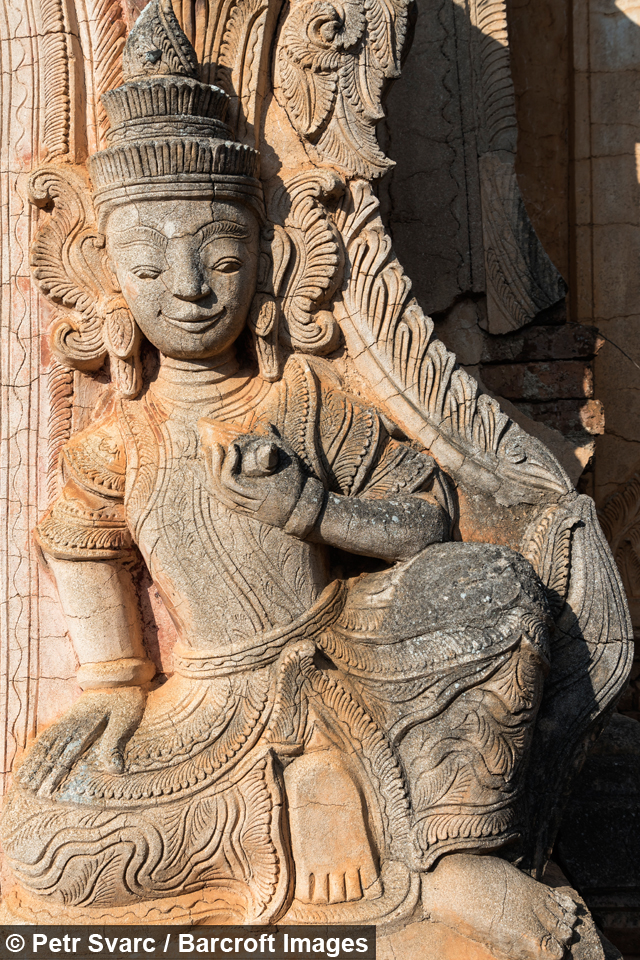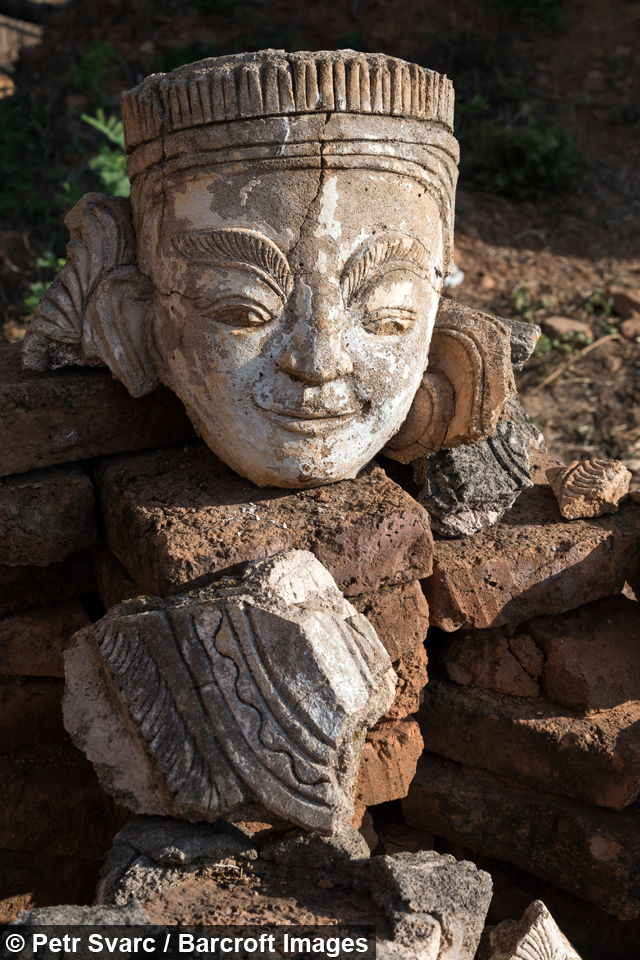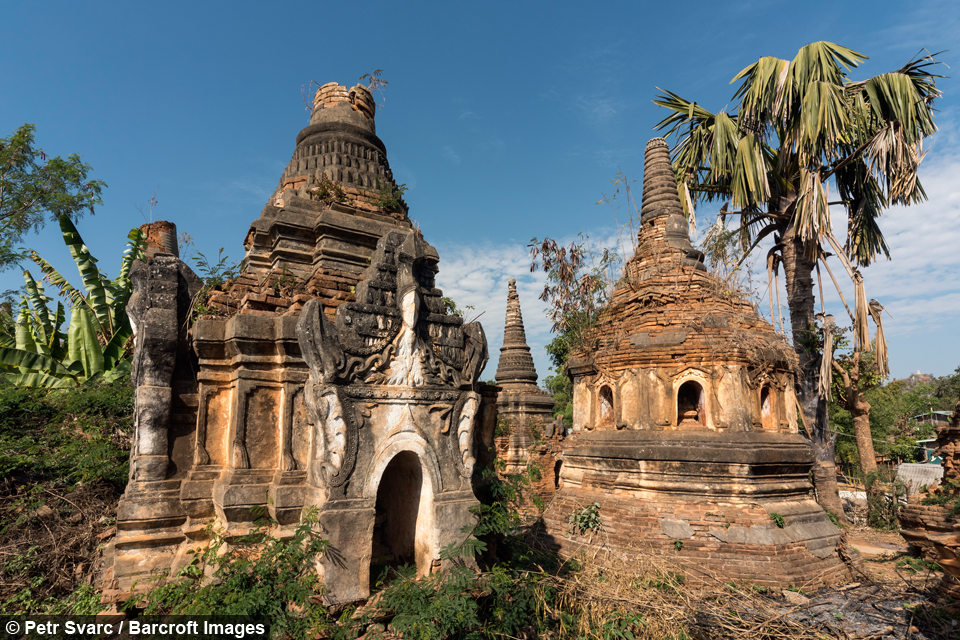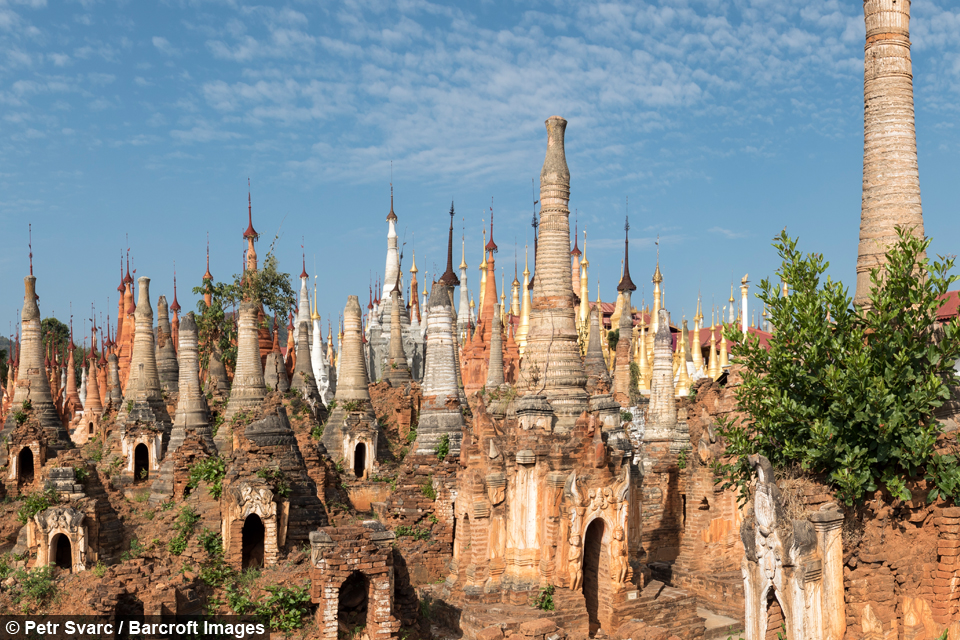Explore the crumbling and gold plated towers of ancient Burmese villages
By Hannah Stevens @hannahshewans
Scroll down for the full story
Photographer Petr Švarc travelled to Indein, a small village West of Inle Lake in Burma, in January to capture the two groups of towers - known as pagodas - hidden away at the Shwe Inn Thein and Nyaung Ohak sites.
Shwe Inn Thein is believed to date back to the days of Indian emperor Ashoka, who sent monks out in the 3rd century BC to spread Buddhist beliefs across Asia.
After travelling across much of south and south east Asia, Petr decided to return to Burma fifteen years after his first visit.
He said: “I wanted to see the same country after almost 15 years and I wanted to visit places that were off-limits during my first visit.
“It is a fascinating place, especially when you’re there early in the morning to avoid the crowds.
“My personal feeling is that it would be more charming and romantic to keep all the stupas crumbling and overgrown like the jungle, but I am sure that many would disagree.”
The elusive pagodas can be reached by a very bumpy car ride around the lake or an eight kilometre boat ride through the jungle, but only in the rainy and winter seasons as water levels are too low during the summer.
At the base of the hill lies Nyaung Ohak, which is home to a set of overgrown stupas - dome shaped buildings erected as a Buddhist shrine.
The stupas are decorated with carvings of Buddha, celestial beings and mythological animals, including Naga serpents.
Crumbling pagodas are gradually being restored with the help of donations from around the world, but the process is slow and there are hundreds of towers to repair.
Petr added: “Near the main pay complex, you will find recently restored stupas with donor plaques.
“The Burmese are very religious people. It is an extremely poor nation, yet everywhere you go you will find stupas covered with gold plates.
“My feeling is – and now it is a speculation, not a verifiable fact – that the Burmese spend a bigger share of their income on religion, like gifts to monks, monuments, than any other country I have visited.
“While they certainly welcome tourist income, their attitude toward restoration appears to be driven mainly by reverence.
“I hope it will stay that way.”
Like many southern Asian countries, Burma has a growing tourist industry but Petr says it has not affected the charm of the local people.
He said: “During my first visit there were no signs of mass tourism, you could easily visit the main sights on your own, now you have to try and avoid crowds.
“However, people are still charming and welcoming. You don’t see those typical side-effects of tourism development like in other Asian destinations.”
Petr, who lives in the Czech Republic, plans to revisit Burma soon to discover more ancient structures within the Myanmar jungle, some of which are still not open to foreigners.
